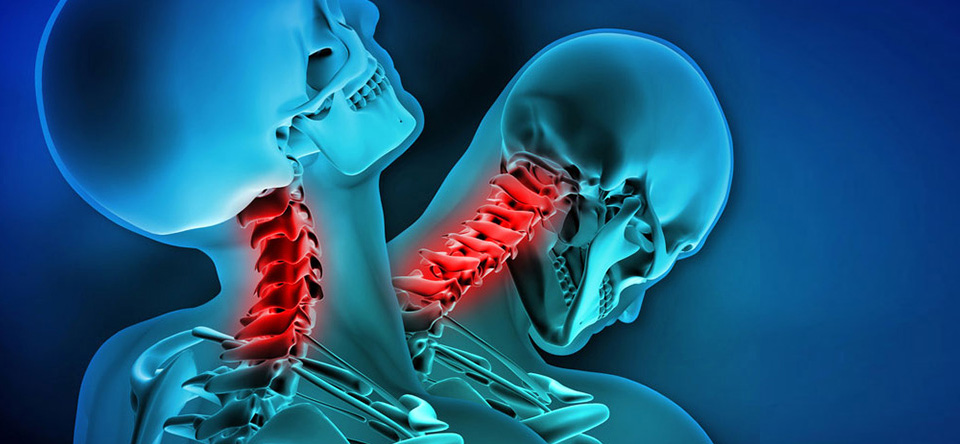In this article, we will teach you how whiplash injuries hurt you!
The term “whiplash” was first used in 1928 to define an injury mechanism of sudden hyperextension followed by an immediate hyperflexion of the neck, which results in damage to the muscles, ligaments and tendons-especially those that support the head. Today, we know that whiplash injuries frequently do not result from hyperextension or hyperflexion (extension and flexion beyond normal physiological limits), but rather an extremely rapid extension and flexion.
Due to their complicated nature and profound impact on people’s lives, few topics in health care generate as 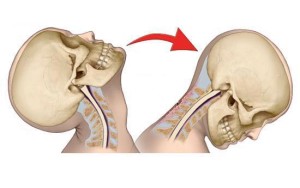 much controversy as whiplash injuries. Unlike a broken bone where a simple x-ray can validate the presence of the fracture, and standards of care can direct a health care professional to the best way in which to handle the injury, whiplash injuries involve an unpredictable combination of nervous system, muscles joints and connective tissue disruption that is not simple to diagnose and can be even more of a challenge to treat. In order to help you understand the nature of whiplash injuries and how they should be treated, it is necessary to spend a bit of time discussing the biomechanics of whiplash injury and how whiplash injuries occur.
much controversy as whiplash injuries. Unlike a broken bone where a simple x-ray can validate the presence of the fracture, and standards of care can direct a health care professional to the best way in which to handle the injury, whiplash injuries involve an unpredictable combination of nervous system, muscles joints and connective tissue disruption that is not simple to diagnose and can be even more of a challenge to treat. In order to help you understand the nature of whiplash injuries and how they should be treated, it is necessary to spend a bit of time discussing the biomechanics of whiplash injury and how whiplash injuries occur.
The Four Phases of a Whiplash Injury
During a rear-end automobile collision, your body goes through an extremely rapid and intense acceleration and deceleration. In fact, all four phases of a whiplash injury occur in less than one-half of a second! At each phase, there is a different force acting on the body that contributes to the overall injury, and with such a sudden and forceful movement, damage to the vertebrae, nerves, discs, muscles, and ligaments of your neck and spine can be substantial.
It may be helpful to go through each one of these phases to illustrate exactly what happens at each phase.
Phase One
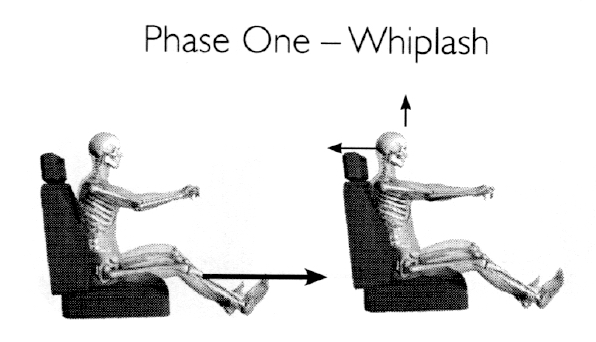
During this phase. your car begins to be pushed out from under you and your mid-back and neck to straighten. This causes upward compressive and shearing forces in the neck.
During this first phase, your car begins to be pushed out from under you, causing your mid-back to be flattened against the back of your seat. This results in an upward force in your cervical spine, compressing your discs and joints. As your seat back begins to accelerate your torso forward, your head also moves backward, creating a shearing force in your neck. If your head restraint is properly adjusted, the distance your head travels backward is limited. However, most of the damage to the spine will occur before your head reaches your head restraint. Studies have shown that head restraints only reduce the risk of injury by ll-20%.
Phase Two
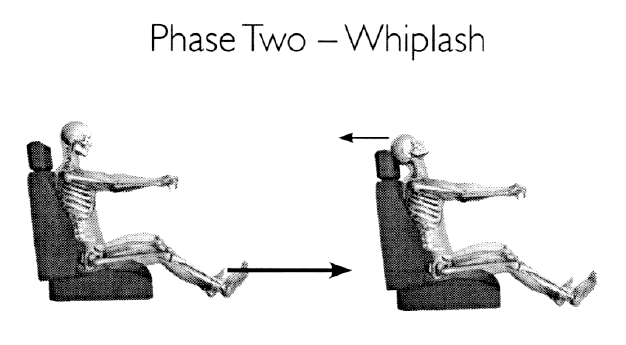
During this phase, your head continues to move backward into extension, creating a powerful shearing force in the neck. This shearing, combined with the compression of the spine in the neck causes substantial injury.
During phase two, your torso has reached peak acceleration – 1.5 to 2 times that of your vehicle itself – but your head has not yet begun to accelerate forward, and in fact continues to move rearward. An abnormal S-curve develops in your cervical spine as your seat back recoils forward, much like a spring-board, adding to the forward acceleration of the torso. Unfortunately, this forward seat back recoil occurs while your head is still moving backward, resulting in a shearing force in the neck that is one of the more damaging aspects of a whiplash injury. Many of the bone, joint, nerve, disc and TMJ injuries that we see clinically occur during this phase.
Phase Three
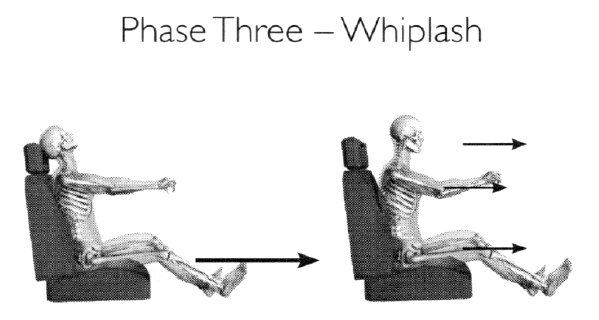
During this phase, your head and torso are projected forward from the recoil of your seat and is projected forward. As you are wearing a seat belt. any slack in the belt is taken up.
During the third phase. your torso is now descending back down in your seat and your head and neck are at their peak forward acceleration. At the same time, your car is slowing down. If you released the pressure on your brake pedal during the first phases of the collision, it will likely be reapplied during this phase. Reapplication of the brake causes your car to slow down even quicker and increases the severity of the flexion injury of your neck. As you move forward in your seat, any slack in your seat belt and shoulder harness is taken up.
Phase Four
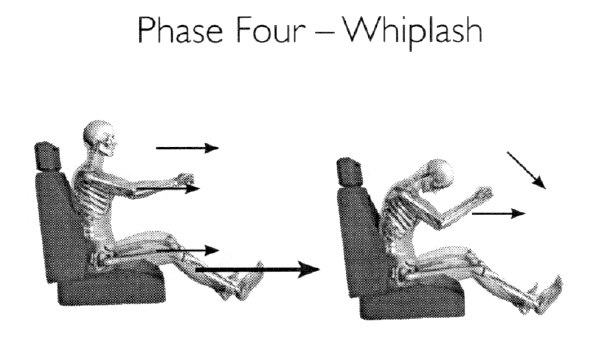
During this phase, your head and torso continue to be projected forward, but your torso is kept from moving forward by your seat belt. The forward energy is then transferred through your neck causing it to go into hyperflexion.
This is probably the most damaging phase of the whiplash phenomenon. In this fourth phase, your torso is stopped by your seat belt and shoulder restraint and your head is free to move forward unimpeded. This results in a violent forward-bending motion of your neck, straining the muscles and ligaments, tearing fibers in the spinal discs, and forcing vertebrae out of their normal position. Your spinal cord and nerve roots get stretched and irritated, and your brain can strike the inside of your skull. This can cause a mild to moderate brain injury. If you are not properly restrained by your seat harness, you may suffer a concussion, or more severe brain injury, from striking the steering wheel or windshield.
Resolution
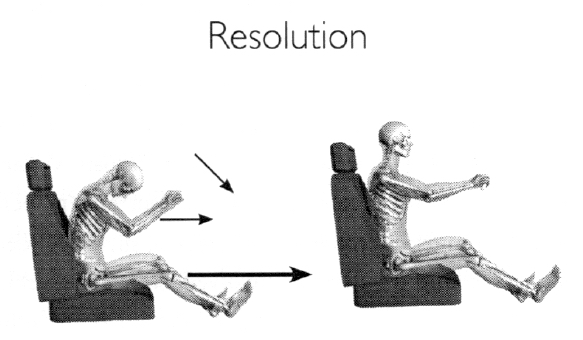
The resolution phase is when the energy from the collision has dissipated and your body returns to a neutral position from the hyperflexion of phase four.
Once the collision forces dissipate, your body goes back into a neutral position. The entire whiplash injury process from initial contact of the two motor vehicles to the resolution phase takes place in less than one-half second. If a secondary collision occurs, the body goes through this process again, further injuring damaged tissues.
If you haven’t yet found a great chiropractor to help you recover, check out our top picks near you!

